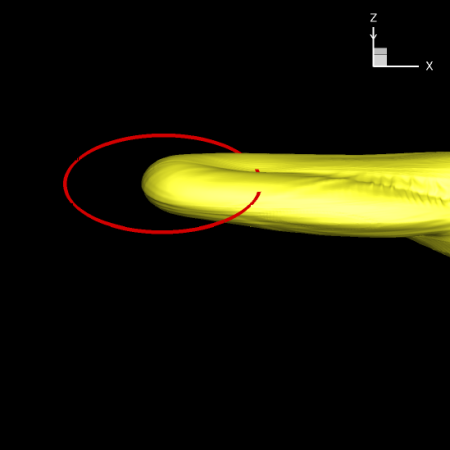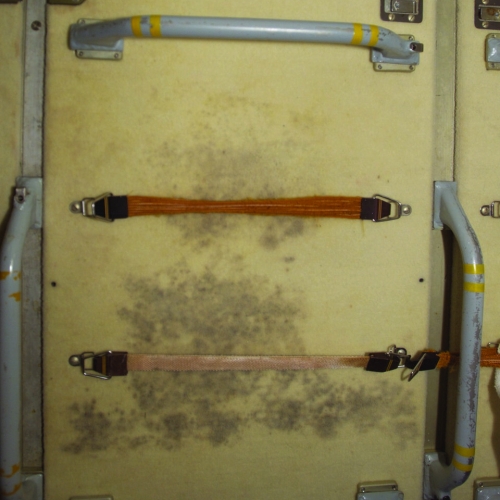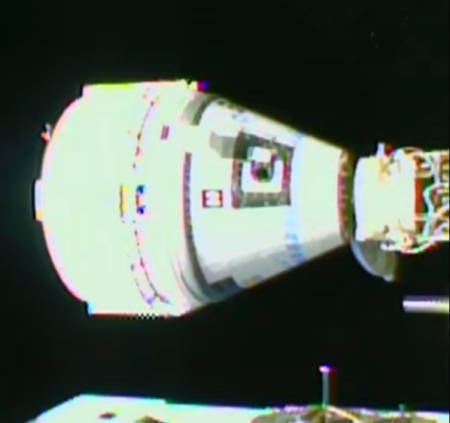
The uncertainty of science: Using a computer simulation, scientists have determined that if the solar system had two million years ago passed through one of the known nearby interstellar clouds within the relatively empty Local Bubble of space, it would have shrunk the Sun’s heliosphere enough so that the Earth would no longer be inside it, thus exposing the planet to interstellar space.
The image to the right comes from that simulation, and is figure 1 of the scientist’s paper [pdf]. The red line marks the Earth’s orbit (tilted sideways slightly to make it obvious), the yellow blob the shrunken heliosphere.
From the paper’s abstract:
There is overwhelming geological evidence from 60Fe and 244Pu isotopes that Earth was in direct contact with the ISM [interstellar medium] 2 million years ago, and the local ISM is home to several nearby cold clouds. Here we show, with a state-of the art simulation that incorporate all the current knowledge about the heliosphere that if the solar system passed through a cloud such as Local Leo Cold Cloud, then the heliosphere which protects the solar system from interstellar particles, must have shrunk to a scale smaller than the Earth’s orbit around the Sun (0.22).
Using a magnetohydrodynamic simulation that includes charge exchange between neutral atoms and ions, we show that during the heliosphere shrinkage, Earth was exposed to a neutral hydrogen density of up to 3000cm-3. This could have had drastic effects on Earth’s climate and potentially on human evolution at that time, as suggested by existing data.
This model is just one possible explanation of the presence of 60Fe and 244Pu isotopes on Earth. Another popular hypothesis is that a supernova occurred about 30 light years away, close enough to expose the Earth to interstellar space but not so close as to cause the total extinction of life.
With both theories, the event could also be an explanation for the significant climate changes two million years ago — such as the beginning of the most recent and now-ending ice age (no SUVs required) — as well as major evolutionary changes that occurred at that time among the ancestor species of humanity.
All is uncertain however. The scientists have no evidence the Earth actually entered a local dense cloud two million years ago. All they are doing is postulating that if such a thing happened, the dense cloud could shrink the heliosphere so much the Earth would be exposed to the interstellar medium.
Since we also do not yet have evidence of a specific nearby supernovae event either, neither theory can be favored. In fact, both could have been happened at different times in the past. Or neither.
Hat tip to reader Phil Berardelli, author of Phil’s Favorite 500: Loves of a Moviegoing Lifetime.












